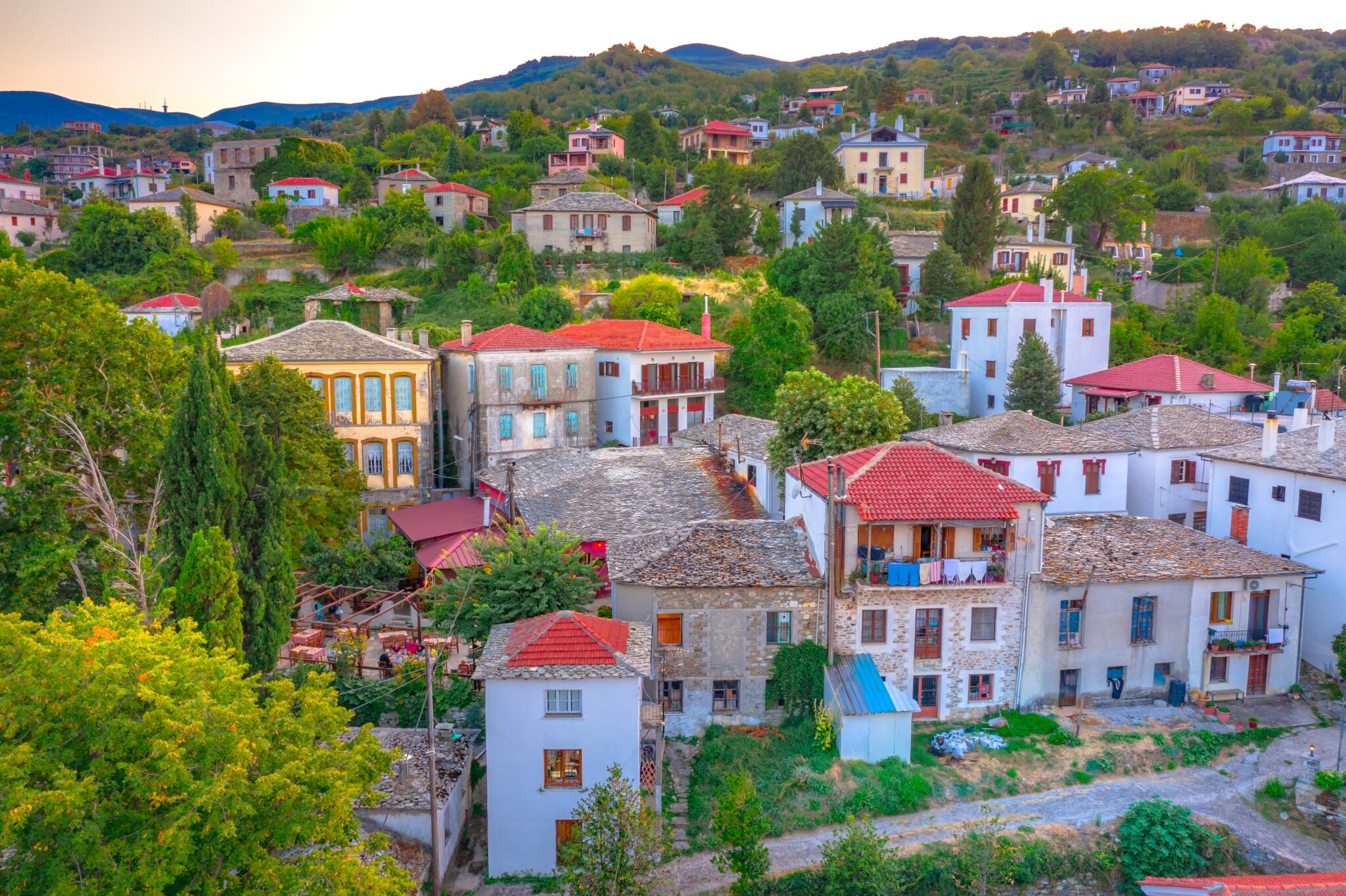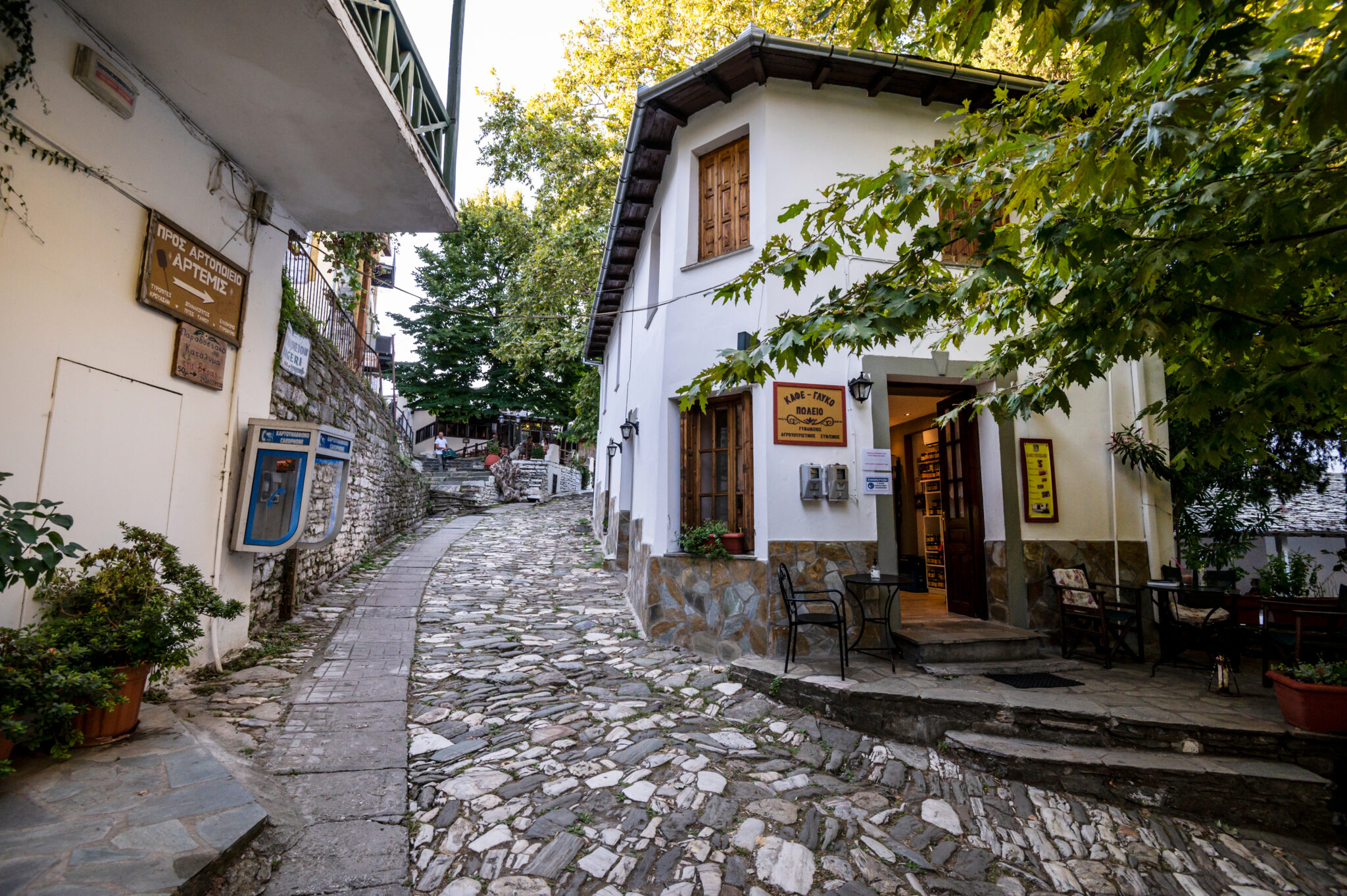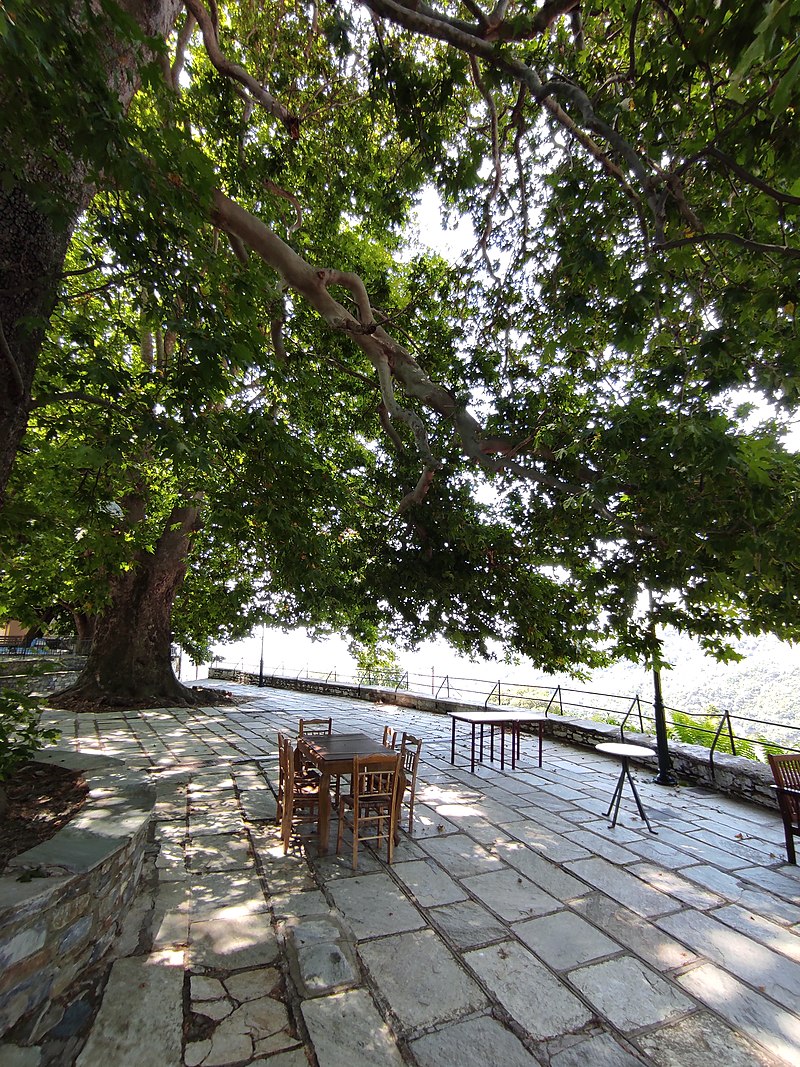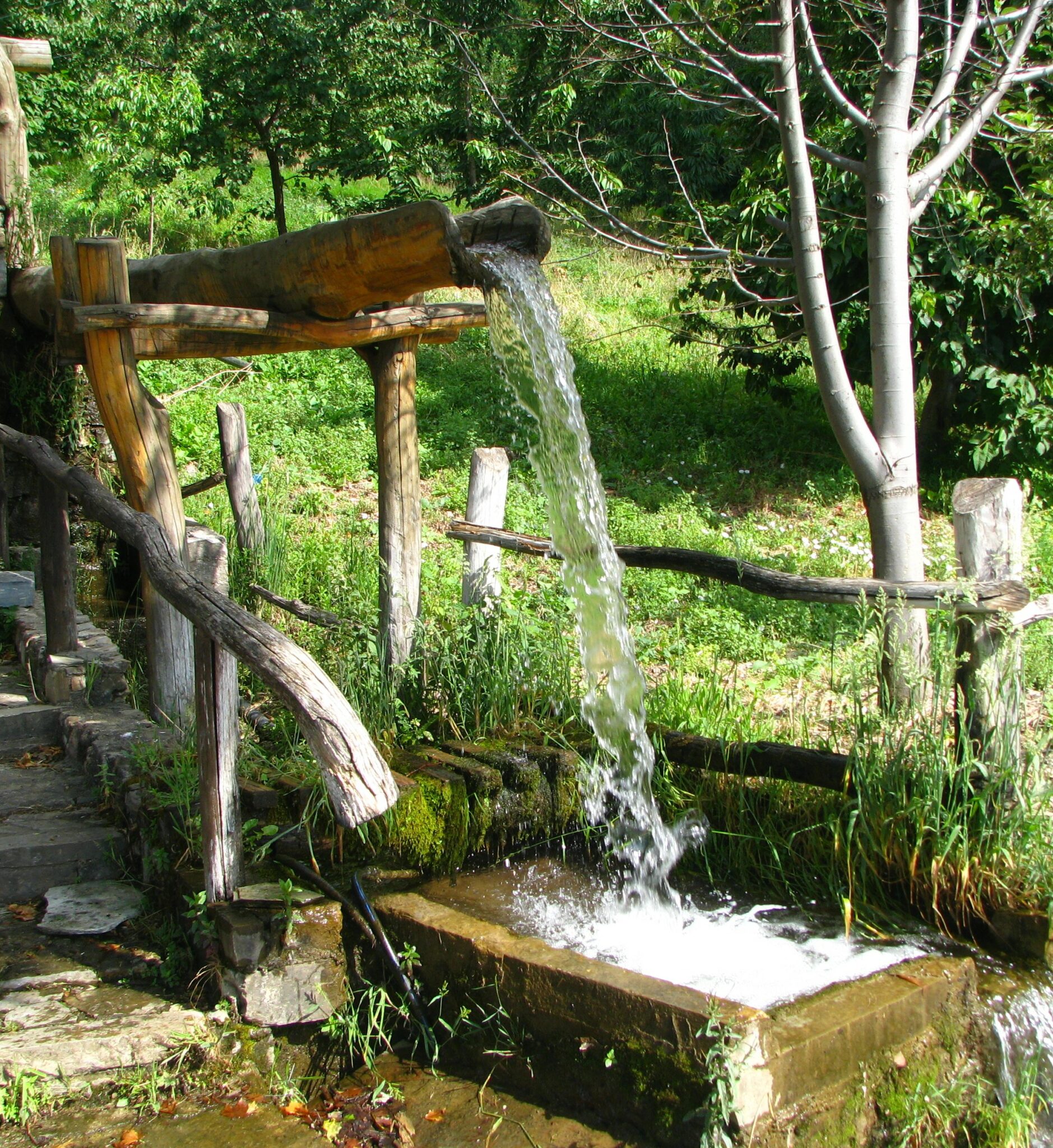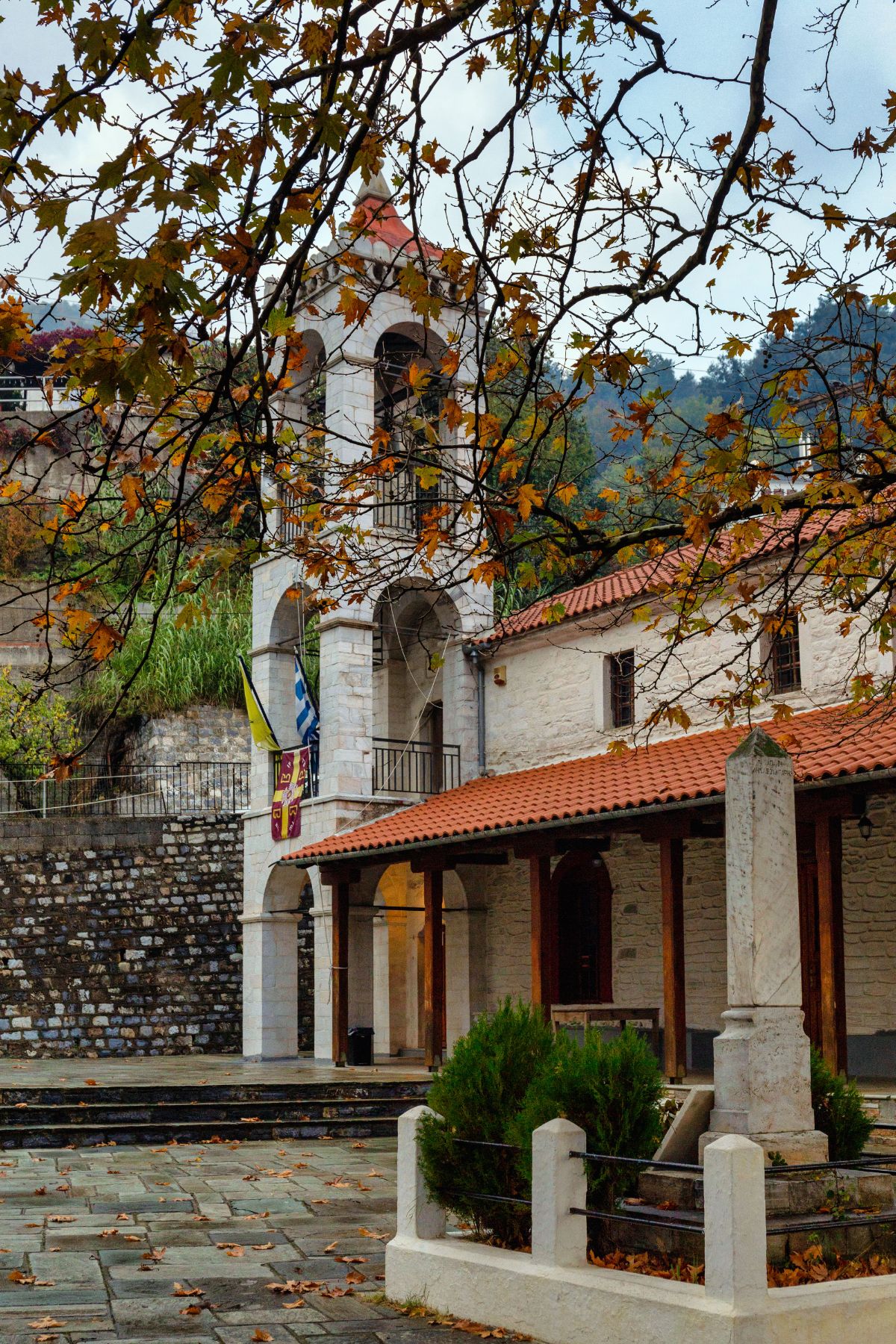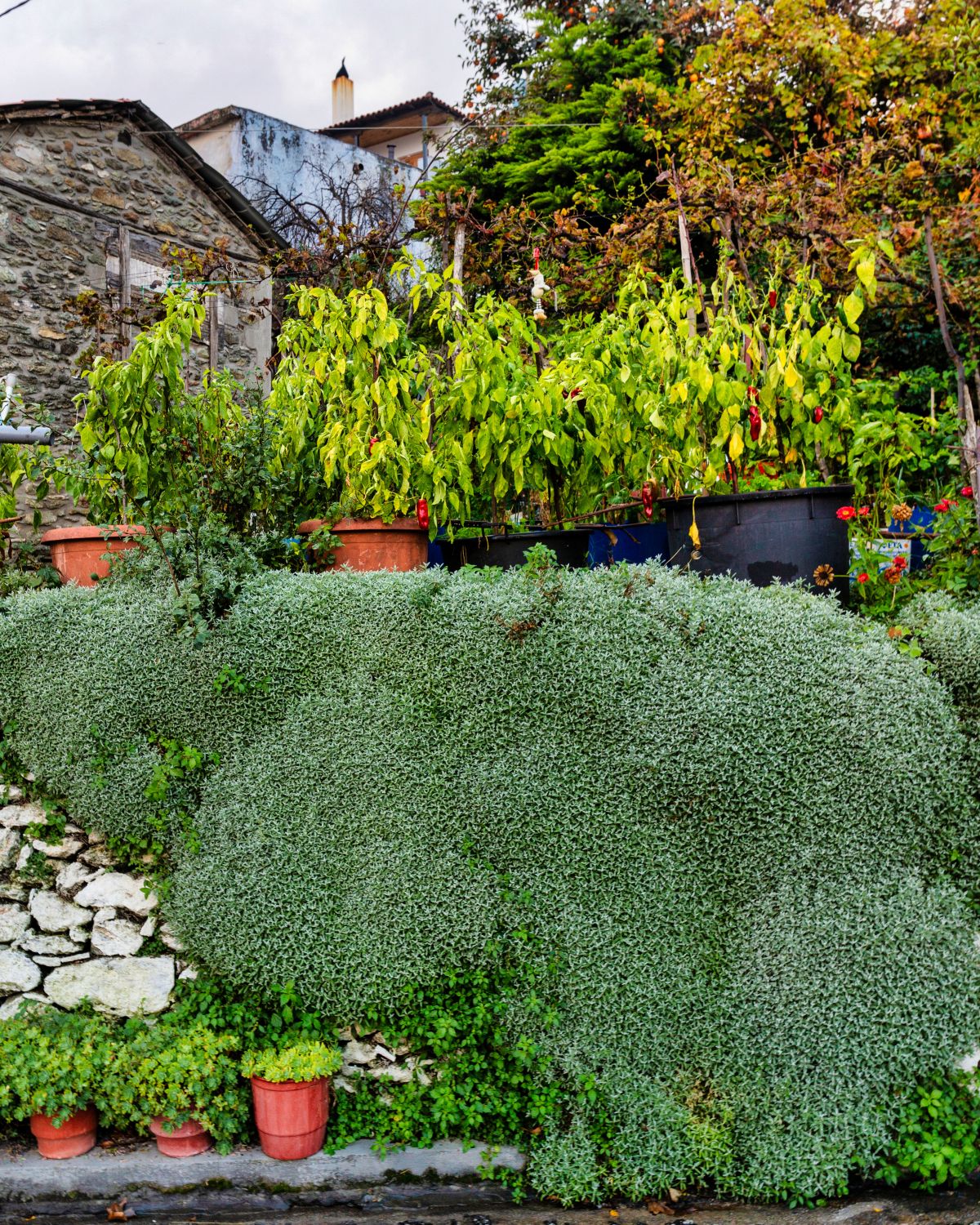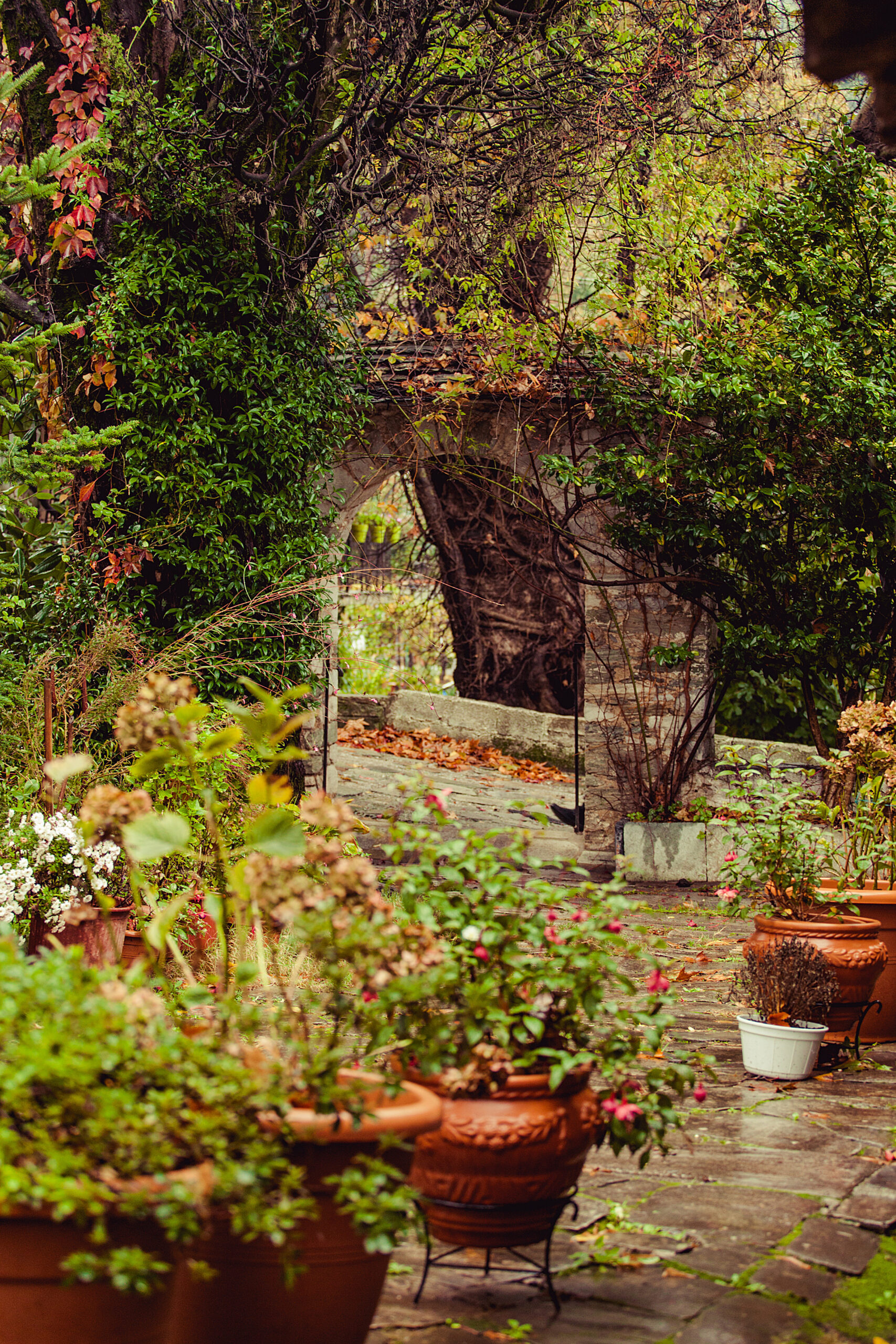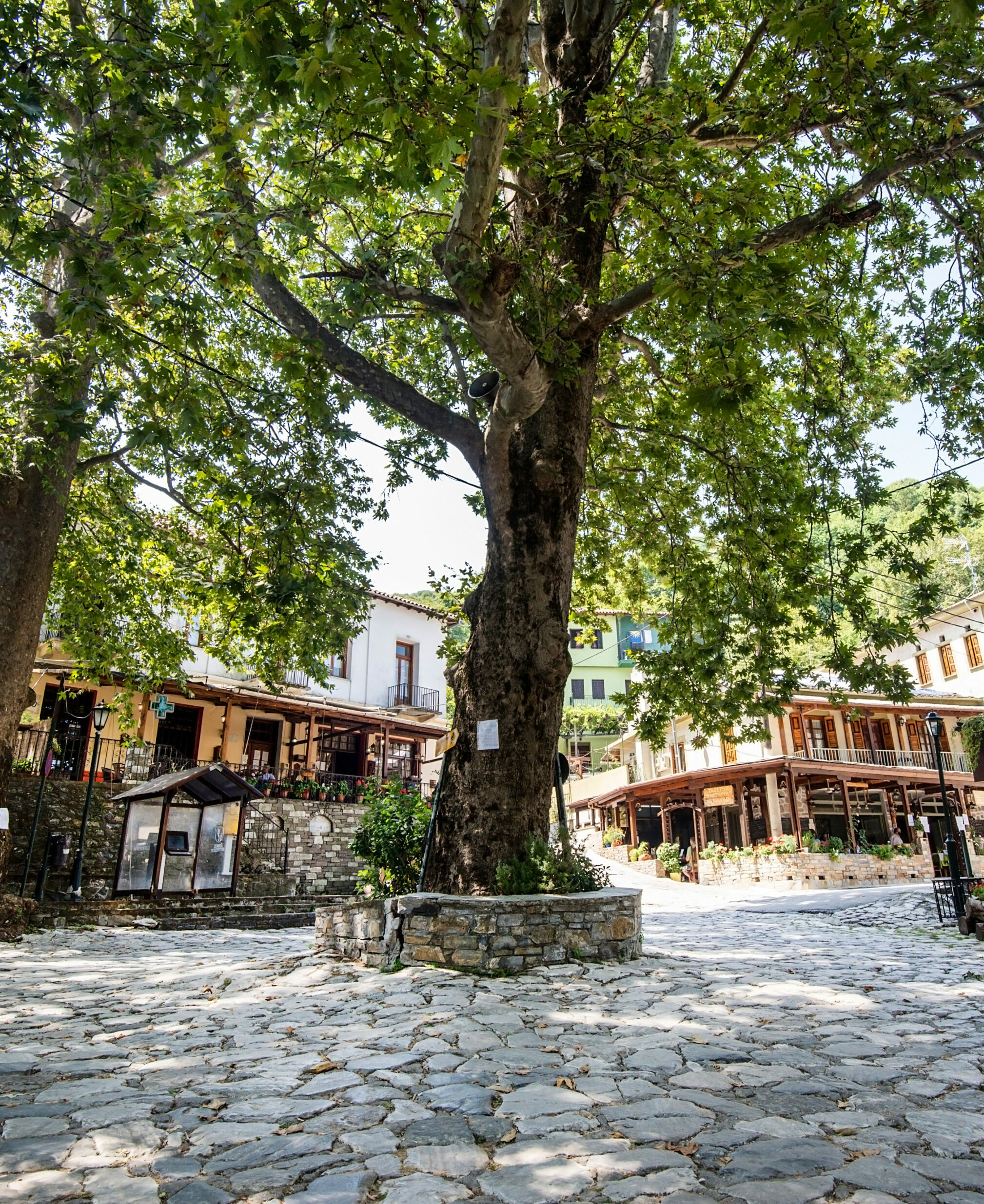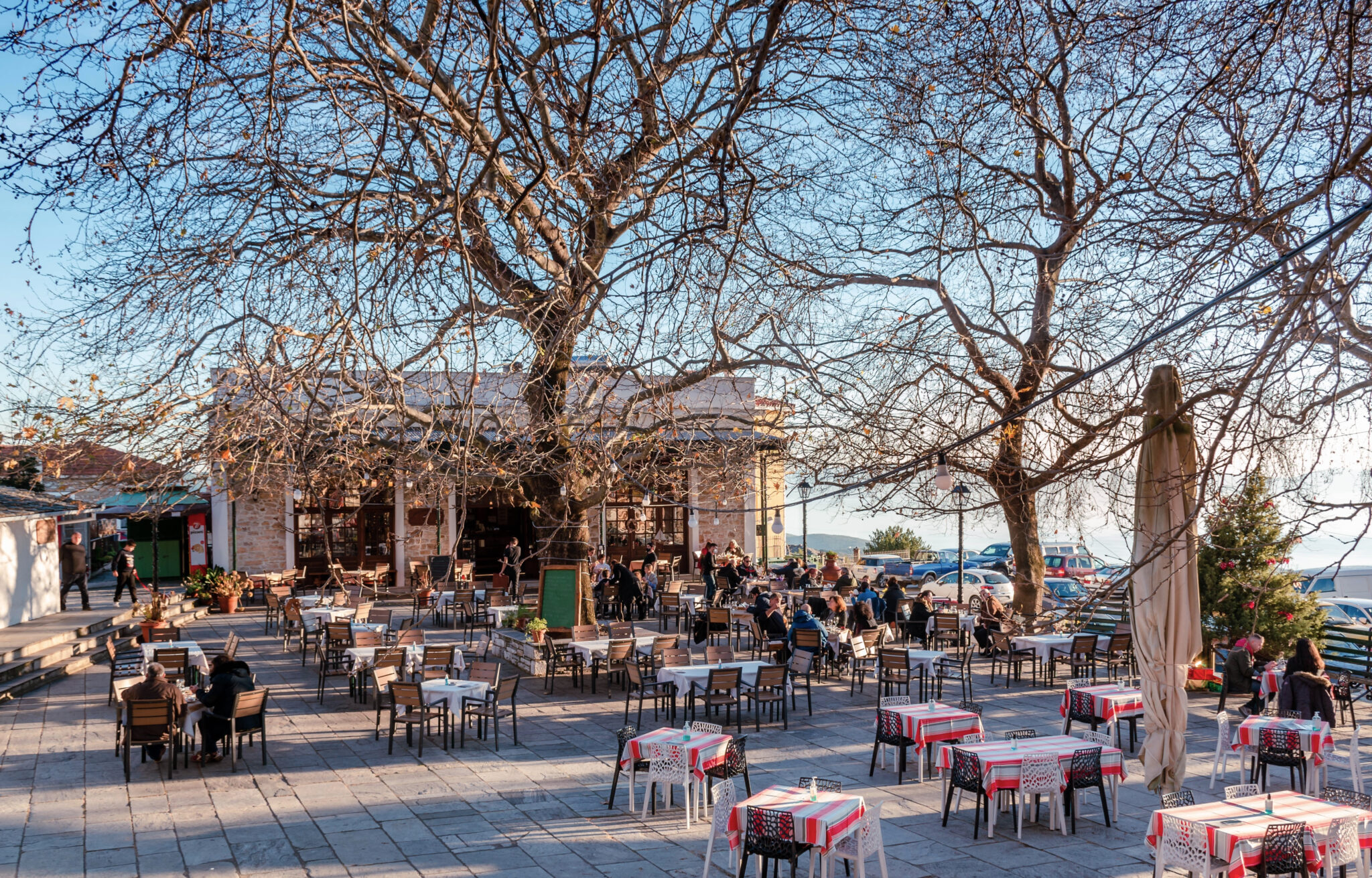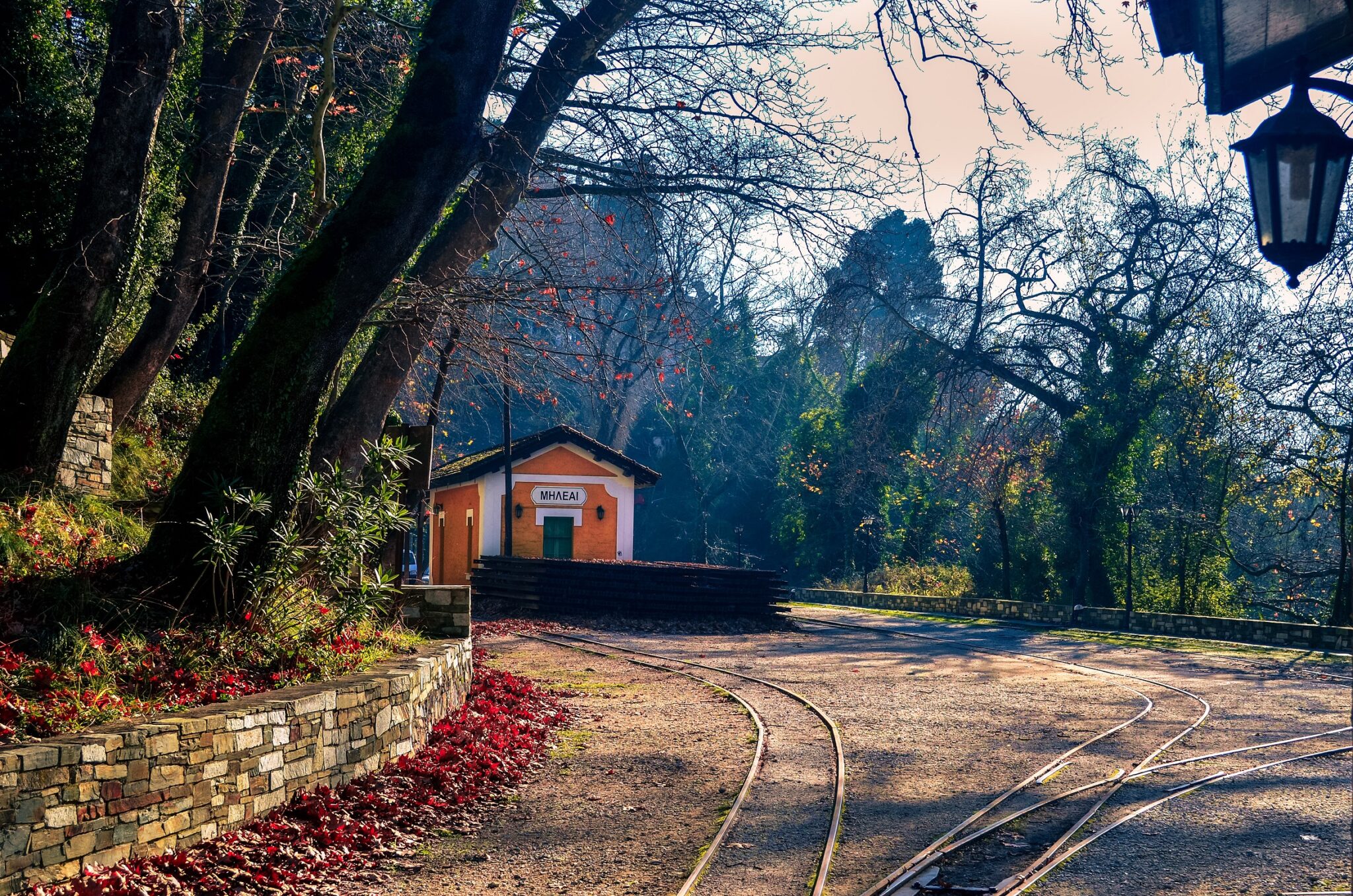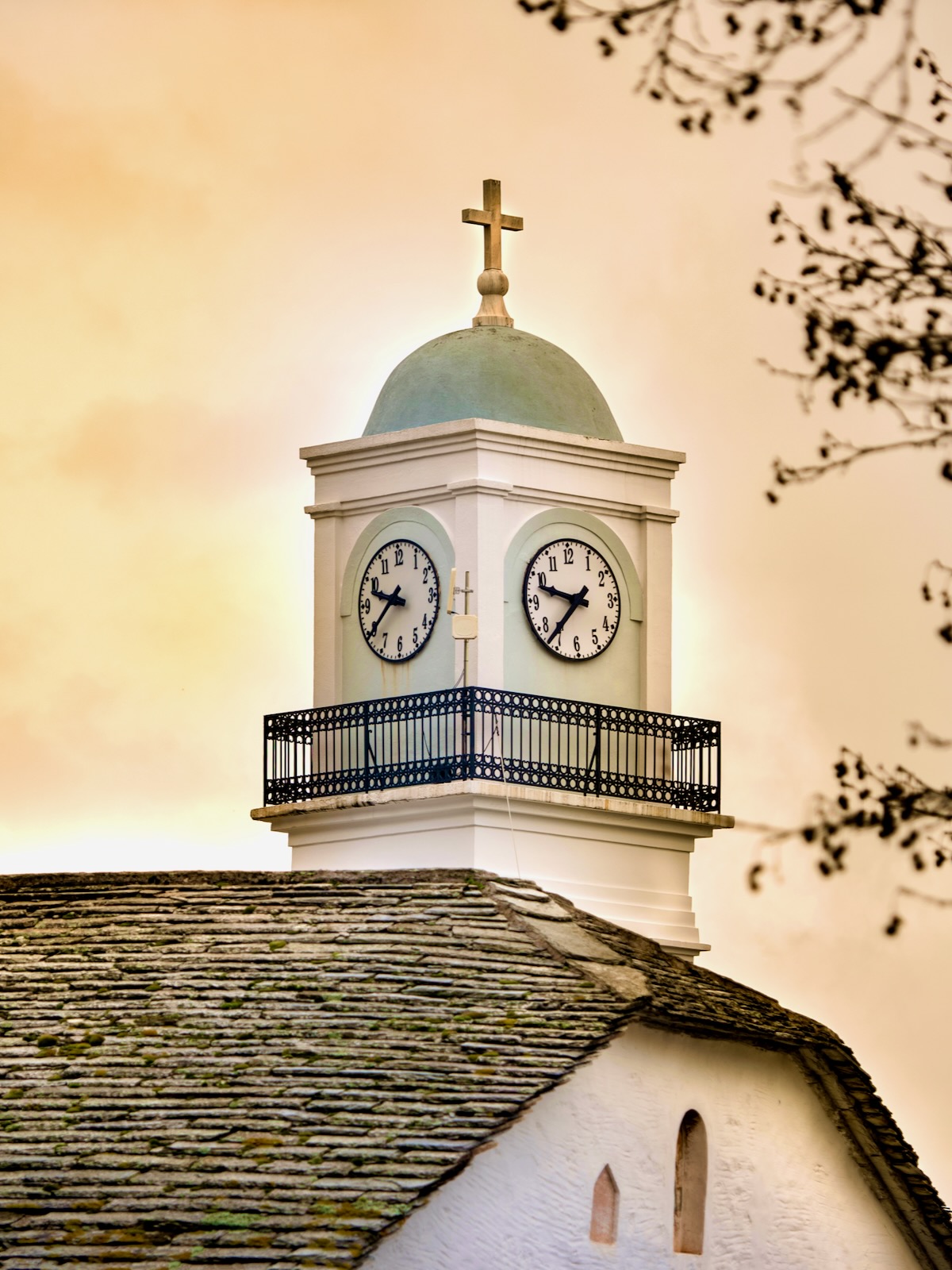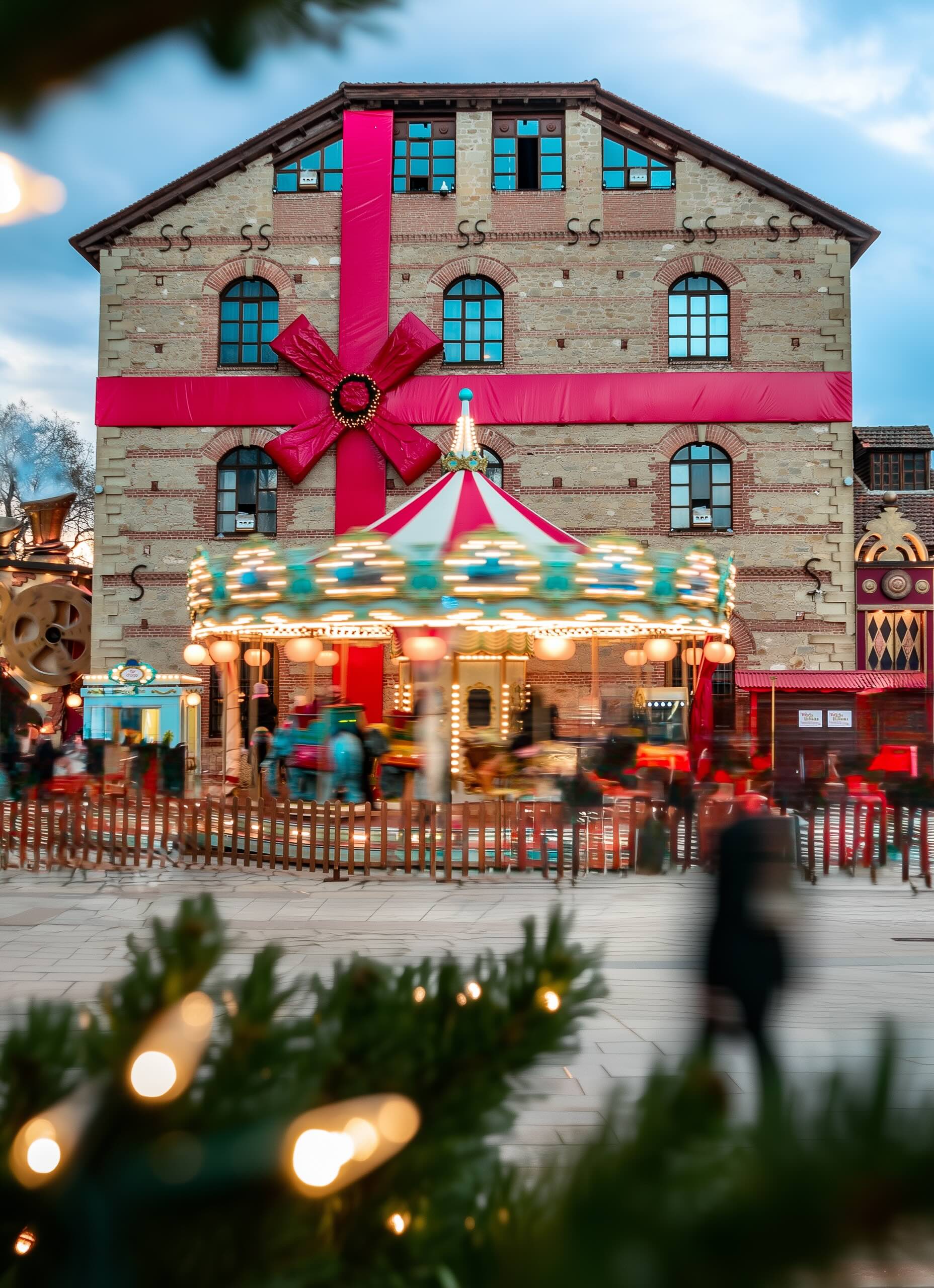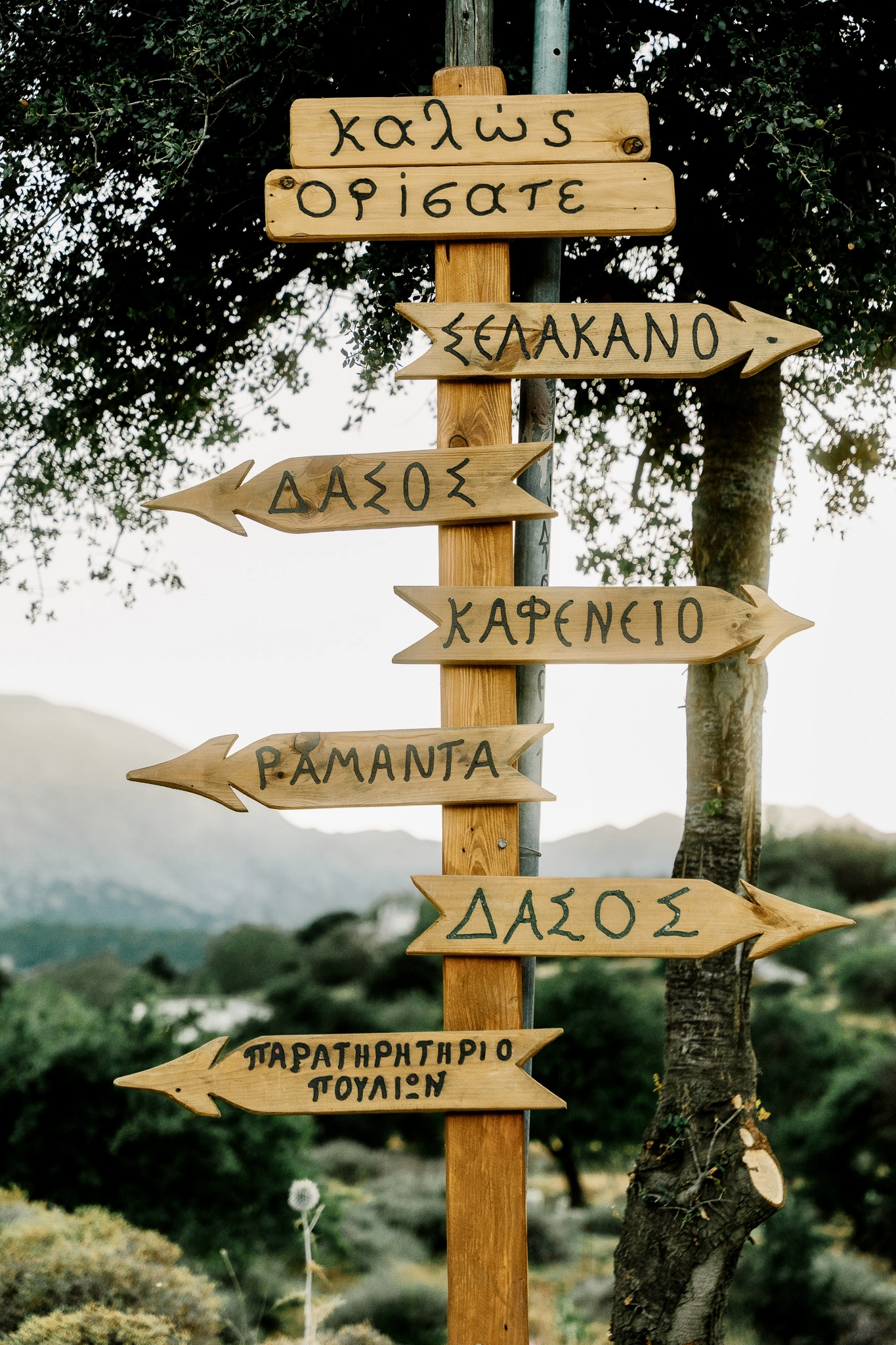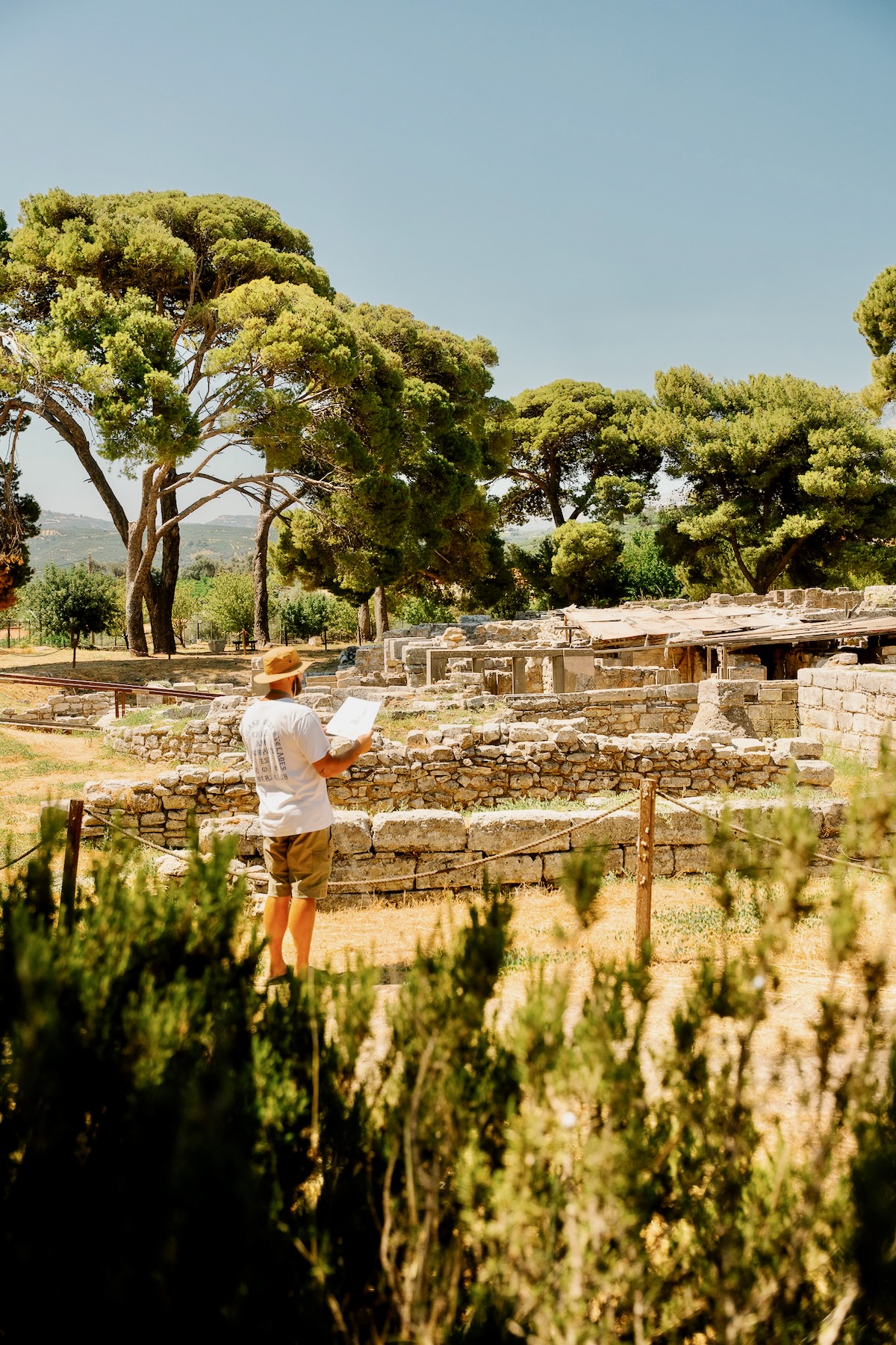Pelion is one of Greece’s all-year destinations destinations that magnetises visitors regardless of the season. The ‘Mountain of the Centaurs’ boasts magnificent forests that are perfect for exploring on foot or bicycle, a high-quality ski resort, and some of the most beautiful villages in Greece, a whopping 74 in total. It is home to important historical sites and monuments as well as noteworthy cultural and religious buildings. The region also has a development of excellent boutique hotels, traditional tavernas, and restaurants that highlight the region’s exceptional produce and crafts. And, of course, it is the land of stunning beaches, some of them busier than others, but all scenic and clean.
Zagora
Passing the villages near Volos, Portaria and Makrinitsa, and leaving the Pagasetic Gulf behind, cross the mountain, and head to drink in a stunning view of the Aegean Sea from the traditional settlement of Zagora. Dense forests carpeted in fallen leaves and dozens of shades of green, brown, red, and yellow are a sight that makes one’s eyes almost ache from the vibrancy of the colours. With the sun playing hide-and-seek with the clouds and the light chasing the dark, moist corners, the capital of Pelion, Zagora, is a landscape that deeply inspires nature lovers.
The history of the village goes back a long way, and findings from as far back as the 6th century BC have been discovered in the broader area. From the 16th century onwards, Zagora began to develop commercially and economically with the production of silk and a trading fleet. The development brought education, and in 1702 the “Hellenic School” was founded at the Monastery of St. John the Baptist, where high school and academy-level courses were taught. Here, Rigas Feraios, Anthimos Gazis, and other prominent figures studied. It used to operate as a folk museum and has hosted exhibitions, but for now, you will find it closed. Today, the village is famous not only nationwide but globally for its top quality apple production.
Hania
Hania is the closest village to the ski resort in Agriolefkes and just 12 km away from Portaria. The area used to have inns for travellers and carriers (kiradzides) who transported goods to the villages. Nowadays, due to the area’s popular ski resort, Hania is filled with tourist shops, hotels, ski equipment rental stores, and traditional tavernas. Staying in the village’s guesthouses is a great option that offers easy access to the ski centre and the lovely surrounding natural landscape.
Drakeia
Travelling from Hania to Drakeia (approximately 8 kilometres distance) offers a lovely experience as you’ll pass through chestnut and oak forests, enjoying stunning views of the Pagasetic Gulf below. The village has a picturesque upper neighbourhood with old houses, two squares lined with plane trees, a traditional bakery, tavernas and cafes.
Built amphitheatrically on a hillside since 1615—or perhaps even earlier—Drakeia is home to several interesting churches. These include the Church of Agios Georgios, adorned with paintings by Pagonis, and the Church of Agios Spyridonas, which features a beautiful, intricately wood-carved altar screen. Drakeia is also referred to as a “martyr village” on local signs because, during World War II, the Nazi army executed 118 villagers in retaliation for their resistance activities.
Makrirrachi
Here, majestic nature reigns supreme, with sun-drenched ravines even in summer, and shade throughout the journey to the village, thanks to the towering chestnut, walnut, and plane trees that form arches with their sprawling branches and shelter the road. Ferns and ivy are wrapped around everything, and the sound of crystal-clear, flowing water surrounds you. It is futile to try and pinpoint the exact source, as, in Makrirrachi, water flows from every direction, nourishing apple orchards, forming streams and pools, and soothing with its pure sound.
While the microclimate of Pelion makes this region exceptionally fertile, Makrirrachi is said to possess a “microclimate within the microclimate,” which promotes the growth of colourful and fragrant flowers, such as hydrangeas, gardenias, and camellias. Legend has it that Makrirrachi was the summer residence of the Olympian gods, and fittingly, the village is also known as “the village of flowers.” The nurseries and greenhouses of this small village, located southeast of Zagora, were once a significant occupation and source of income for its inhabitants, but their numbers have dwindled over time. Nonetheless, even within the village, you will find families trading beautiful flowers, with some rooftops transformed into small nurseries brimming with potted plants.
Makrirrachi is also one of the most significant apple-producing villages in Pelion. In autumn, during the harvest season, the village bustles with activity, and the surrounding landscape presents unique scenes. The apple trees combine green and yellow leaves and are laden with crisp, deep red fruits. Another growing activity is mushroom foraging, and in October, a two-day Mushroom Festival is organised.
The architecture of the houses here is simple, unlike the more grandiose mansions in other Pelion villages. However, the well-maintained, plane tree-shaded village square and the impressive church of St. John the Baptist are well worth visiting, and not only for the views stretching from the courtyard down to the azure Aegean Sea and the enchanting beaches of Agioi Saranta and Plaka.
It’s also worth following the trail that leads through an enchanting forest to the Makrirrachi Poros Waterfalls, a truly dreamlike landscape. This is an amazing experience, a revitalising walk that you can begin from the Karavoma area at the Volos-Zagora-Makrirrachi crossroads.
Kissos
A small, picturesque village built at an altitude of 550 meters and snuggled amidst chestnut, oak, apple and plane tree forests. Traditional architecture dominates, as do the pretty stone-paved paths, an abundance of water, and the prominent attraction in the central square: the Church of Agia Marina. This three-aisled basilica is one of the most representative ecclesiastical monuments in Pelion, and many visitors come to Kissos especially to admire it and then enjoy a meal at the local tavernas.
The locals still call the village “K’so”, which means ivy, but that in the case of the village, according to historian G. Kordatos, is a paraphrase of the word “gold”, which in Greek is “chrysso”. This may be because during the years of Ottoman rule, Kissos was a highly developed and wealthy capital village – something that is hard to imagine today. In the area called Tourni, there was an industry where chestnut wood was processed using special lathes to create the well-known Pelion plates, which were then sold in foreign markets. Kissos also flourished thanks to its silkworm cultivation and the production of skouti (or alatzadon), cotton fabrics made from goat hair.
Starting from Agia Marina, a picturesque old trail leads towards Mouresi and Ai Giannis. Surrounding Kissos, there are several dirt roads to take for off-road adventures through dense forests – if you have a 4×4.
Milies
Almost in the centre of Pelion, it is immediately evident upon seeing it that Milies differs from Portaria and Tsagarada. It is a place that drew outsiders who fell in love with its charms to move there and build guesthouses with personality, little tavernas serving foods sourced from nearby estates and delicious dishes, and ultimately, an engaged community.
Today, Milies is an incredibly picturesque village with its own railway station, a large square with a café, and attractive stone-built houses. Don’t miss the opportunity to see the de Chirico bridge, located approximately 1 kilometre after Milies station, by following the tracks. The bridge was named in honour of Evaristo de Chirico, father of the renowned surrealist painter Giorgio, who was responsible for designing and supervising the train line that still operates today. It’s also worth seeing the stunning frescoes in the Church of the Archangels, located in Milies’ central square.
An anonymous iconographer worked for 33 years (1741-1777) to complete his works here, the most striking fresco of all being one that depicts the zodiac cycle, the wheel of life, with the inscription “The vain life of the wandering world”. The old volumes in the Public Library of Milies are also interesting to see, the oldest of which dates back to 1497, while items from the Milies School, that operated in the village are also on display. The inscription outside the building is indicative: “Psyche’s Akos” (Soul’s Healing).
Read also:
Top Guesthouses on Mt. Pelion, in Northern Greece
Portaria Village on Pelion Mountain in Greece, Home of the Centaurs
7+1 restaurants and taverns in Pelion honouring the authentic local cuisine



